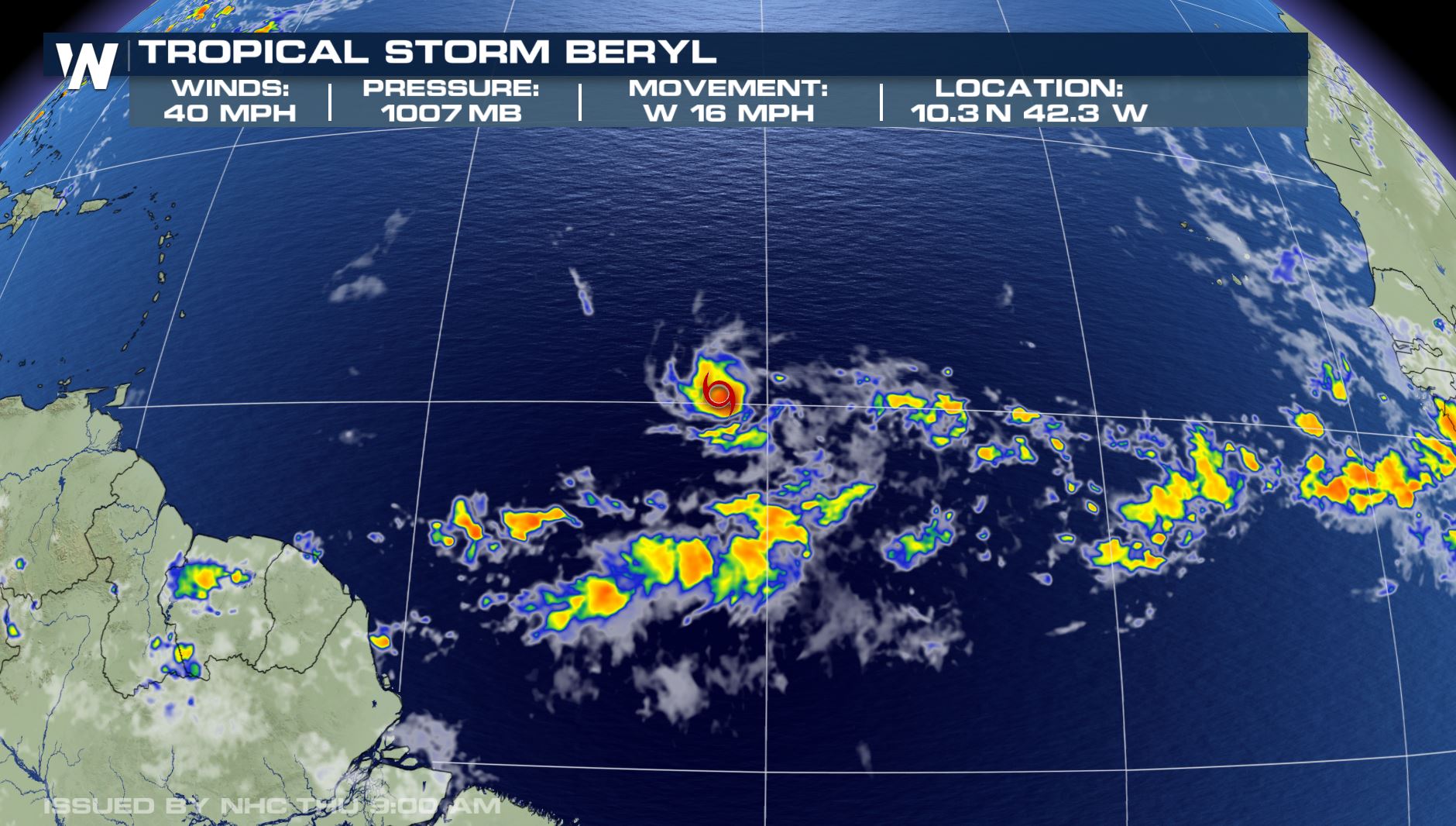Hurricane Beryl’s Path and Intensity: Hurricane Beryl Prediction

Hurricane beryl prediction – Hurricane Beryl is predicted to follow a northeasterly path, with an expected landfall in the vicinity of North Carolina’s Outer Banks on Friday evening. The storm is anticipated to maintain its hurricane strength throughout its progression, potentially intensifying further before making landfall.
Several factors are influencing the intensity and trajectory of Hurricane Beryl. Favorable ocean temperatures and low wind shear are contributing to the storm’s intensification, while the presence of an upper-level trough is guiding its northeasterly path.
Dem say hurricane Beryl go reach Caribbean soon, and na spaghetti models dey use predict where e go reach. Dem models na like different lines wey show different possible paths wey di hurricane fit take. You fit check spaghetti models for beryl to see wetin dem dey predict.
Potential Impacts
Hurricane Beryl poses significant threats to the affected areas. Storm surge, flooding, and wind damage are the primary concerns. Coastal communities may experience storm surge as high as 6 feet, potentially causing extensive flooding and property damage.
Hurricane Beryl, predicted to hit the Lesser Antilles, has now taken aim at Barbados. The island nation is bracing for the storm’s impact, with residents urged to take precautions. For more information on the hurricane’s path and Barbados’ preparations, visit beryl barbados.
The latest updates on Hurricane Beryl’s trajectory will help you stay informed and prepared.
Inland areas are also at risk of flooding due to heavy rainfall associated with the storm. Additionally, hurricane-force winds are anticipated, which could result in downed trees, power outages, and structural damage.
Residents in the projected path of Hurricane Beryl are advised to take necessary precautions, including securing loose objects, preparing emergency kits, and monitoring official updates.
Hurricane Beryl’s Impacts on Infrastructure and Communities

Hurricane Beryl is expected to make landfall in the southeastern United States, bringing with it the potential for significant impacts on infrastructure and communities. The hurricane’s strong winds, heavy rainfall, and storm surge could cause widespread damage to homes, businesses, and transportation systems.
The areas most likely to be affected by Hurricane Beryl include the coastal communities of South Carolina, Georgia, and Florida. These areas are home to millions of people and are home to a variety of critical infrastructure, including power plants, airports, and hospitals.
Economic Impacts
Hurricane Beryl is expected to cause billions of dollars in economic damage. The hurricane’s winds could damage homes and businesses, and its storm surge could flood coastal areas, destroying property and infrastructure. The hurricane could also disrupt transportation systems, making it difficult for businesses to operate and for people to get to work.
Social Impacts
Hurricane Beryl could also have a significant social impact. The hurricane could displace thousands of people from their homes, and it could disrupt essential services such as water and electricity. The hurricane could also lead to increased crime and violence, as people struggle to cope with the aftermath of the storm.
Mitigation Measures
There are a number of measures that can be taken to mitigate the impacts of Hurricane Beryl. These measures include:
- Evacuating coastal areas
- Securing homes and businesses
- Stockpiling food and water
- Preparing emergency plans
By taking these measures, communities can help to reduce the damage caused by Hurricane Beryl and protect the lives of their residents.
Hurricane Beryl’s Environmental Impacts

Hurricane Beryl is predicted to bring severe environmental consequences to the affected areas. The hurricane’s powerful winds, storm surge, and heavy rainfall can significantly damage coastal ecosystems, wildlife habitats, and water quality.
Damage to Coastal Ecosystems
The hurricane’s storm surge and strong winds can devastate coastal ecosystems, including mangrove forests, salt marshes, and coral reefs. These ecosystems provide vital habitats for various marine species, protect shorelines from erosion, and filter pollutants from the water. Hurricane Beryl’s impact could disrupt these ecosystems, leading to the loss of biodiversity and ecological imbalances.
Wildlife Habitat Destruction
Hurricane Beryl’s strong winds and heavy rainfall can also damage or destroy wildlife habitats, including nesting sites for birds and breeding grounds for fish. The loss of these habitats can displace or kill wildlife populations, disrupt food chains, and reduce biodiversity.
Water Quality Impacts
The hurricane’s heavy rainfall and storm surge can lead to increased runoff from land, carrying pollutants and debris into waterways. This can contaminate water sources, affecting aquatic life and human health. Additionally, the storm surge can mix saltwater with freshwater ecosystems, leading to salinization, which can harm freshwater species and vegetation.
Long-Term Effects, Hurricane beryl prediction
The environmental impacts of Hurricane Beryl can have long-term consequences. The damage to coastal ecosystems can increase erosion and make shorelines more vulnerable to future storms. Salinization can alter the composition of freshwater ecosystems, affecting the survival of native species. The loss of wildlife habitats can disrupt ecological balance and reduce biodiversity.
Mitigation Measures
Efforts are being made to protect the environment from Hurricane Beryl’s impacts. Coastal restoration projects aim to strengthen shorelines and restore damaged ecosystems. Wildlife conservation efforts focus on protecting nesting sites and providing refuge for displaced animals. Water quality monitoring and cleanup programs are implemented to minimize pollution and protect aquatic life.